 PCLinuxOS is a APT-ified, Mandriva-based Linux distribution. It’s one of those distributions that offer a separate version for virtually every existing desktop environment. Four of them – Enlightenment, LXDE, Openbox and Xfce are recommended for intermediate to advanced users, while the GNOME and KDE versions are recommended for all user levels (beginner to advanced).
PCLinuxOS is a APT-ified, Mandriva-based Linux distribution. It’s one of those distributions that offer a separate version for virtually every existing desktop environment. Four of them – Enlightenment, LXDE, Openbox and Xfce are recommended for intermediate to advanced users, while the GNOME and KDE versions are recommended for all user levels (beginner to advanced).
If you make a detailed study of all six versions of this distribution, you are going to question the user-level tagging. But that is the subject of another post. For now, let’s review the KDE version, which was last updated on July 5, 2010.
As with any distribution review, it’s best to start with the installation program.
Installation – The KDE image used for this review is a live CD image. The available boot options are shown in the image below. You get a lot of boot options. While I do not argue with the purpose of a live environment, some people might want to install the distro without first booting into the live environment. It would be a good idea to give those group of users two more options (shown in red in the image).
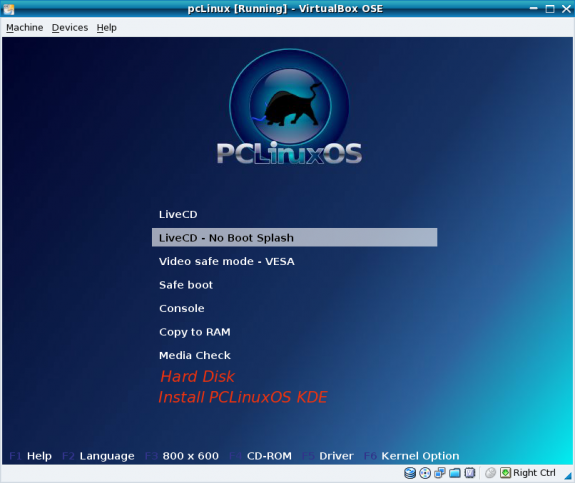
Default boot options plus a couple of suggestions
In contrast, take a look at the boot options of Mandriva One 2010. It is also a live CD, but it offers an option for users who might not want to boot into the live environment, and another option for users who might change their minds about booting or installing from the CD. Most live CD/DVD distributions have these options. It would be a good idea to see them on the next release of PCLinuxOS.

Simple boot options of Mandriva One 2010
Of the major Linux distributions with a live image, PCLinuxOS is, as far as I can recall, the only one that requires a password to install. It’s a requirement that does not make sense to me. It’s not as if the password is hidden or a secret. It’s right there in the middle of the top section of the desktop. I cannot think of a good reason, security or otherwise, why a password is needed to either log into or install a distro from the live environment.
The lack of a Back button at critical steps during the installer process is one very annoying thing, especially if you make a mistake in a previous step. Your only option then is to hit the Cancel button, which means restarting the installation process. All the installers that I have used, even the simplest ones like Ubuntu’s and Mint’s, have a Back button at every step.

Adding a Back button would also be nice
Here’s another instance where an extra button would not hurt. This time, however, it’s not a Back button, but a Cancel button. Imagine for a moment that you are trying to create a partition as shown in the image below. Midway into the operation, you decide against creating the partition. With the installer, you cannot cancel the operation. You will have to complete it, that is, create the partition, then delete it in the main window. Sure, you could click on the window’s close button in the upper right side, but a Cancel button is more professional and expected.
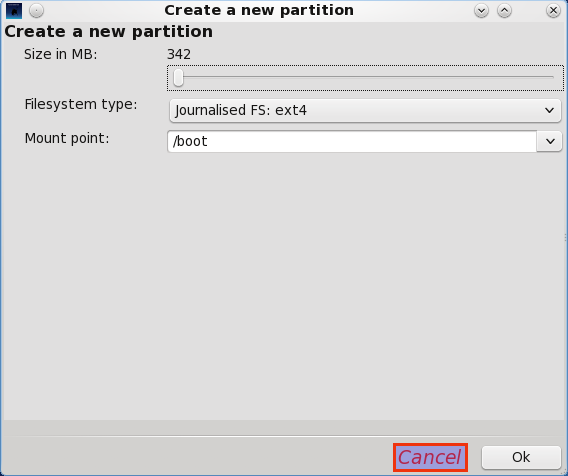
A Cancel button on the partition creation window would be nice, too.
Yet another annoying aspect of the installer is it’s questionable support for LVM. If you didn’t know any better, you’d think that LVM is officially supported, but you’d be wrong. Trying to configure LVM will eventually get you to the step where the message shown in the image below graces your screen. Clicking Ok to install it will keep you waiting from now ’til thy kingdom come. Some people have reportedly succeeded in configuring LVM on PCLinuxOS, but it’s a crap-shoot. Interestingly, the lvm2 package is in the repository, but why is it not packaged with the installer?

Without the LVM2 package, how can you configure LVM?
That’s the end of stuff I do not like about the installer. Actually, there are a few more, but I think these will do for now. What follows is a long list of stuff I also do not like after installation.


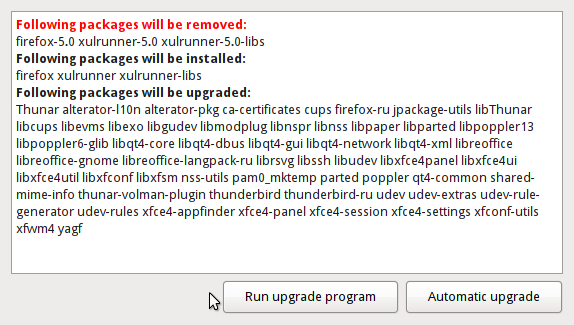
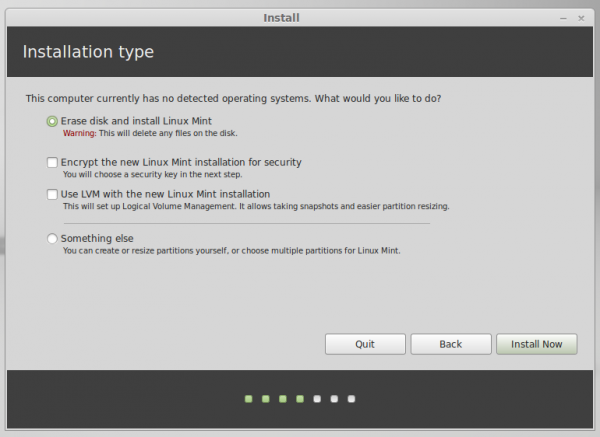

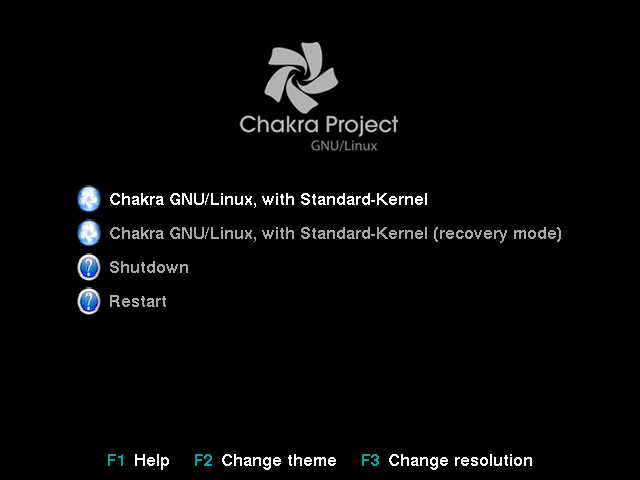


What a spectacularly useless review. The only thing which I am now wiser about is the inability of the writer to write a competent review. I was however somewhat more interested in learning a bit about the OS. Oh well……
It is interesting to observe how different individuals or groups react to criticism. Take the reaction of the PCLinuxOS community to this critical review as an example of one type of reaction. Another type of reaction is that of a Sabayon Linux developer to my review of Sabayon 5.3.
Like night and day.
If you want to read the response of the other Sabayon devs to the post, just keep clicking on Next message. Very instructive.
@finid
Thank you for your quick response, I will try to make this short… (nearly impossible for my writing style LOL)
As a general rule I like to think before responding and I like to verify my statements to ensure I’m not just blowing smoke from an orifice. ;’)
First, there was no attempt to brag in my comments, I was referring only to the helpful community of PCLOS users of which Texstar is an active member, there was no ego involved.
Second, I recall a time when typing MCC from cli brought up the Mandrake Control Center from within PCLOS. This was the exact same set of utilities found in the then current Mandrake version. At some point the Mandrake/Mandriva branding was replaced with the word Master, thus allowing the MCC command to still function. The utilities included in that control center were the exact same ones used on the Mandrake version. So like any inquiring mind I asked “What changes have been made?”
Here is the response I received from Texstar regarding the differences between Mandrake/Mandrivas Control Center and PCLOS Master Control Center:
1.rpmdrake was removed because we don’t use urpmi.
2.Help entries depreciated as they pointed to Mandriva help files. The wording of their help package indicated it would not be a good idea to port it to PCLinuxOS. Also control center crash bug report removed as we did not want to send our control center bug reports to mandriva.
3.The Gnome ISO doesn’t include printer packages therefore setup printer doesn’t show in the hardware section until you install printerdrake
4.Lots of little bug fixes here and there.
Other than that it is pretty much the same dang control center underneath.
Finally, a quote from your Ubuntu vs Mandriva review:
Rpmdrake looks and feels nicer than Synaptic, though at the core, they both do the same thing and in the same manner. One nice feature on Synaptic that is absent on Rpmdrake is live search.
So in conclusion, (this is only my opinion based upon your comments) the look and feel of anything is but an example of “beauty is in the eye of the beholder.” Getting pissed off because so and so refuses to implement your suggestions is unhealthy and counter productive to the Linux community as a whole. The beauty of open source is the free sharing of ideas, anyone with the motivation can help themselves to whatever they want to create a distro that pleases themselves and possibly others. Perhaps you should give it a go and see if you can create the perfect distro, you appear to honestly believe you know what that distro would be like and you could included a default firewall, a boot from hard disk,etc. But consider my warning: No matter what you do, regardless of how you set up the OS, what applications you include, how beautiful you think it is, someone will think it sucks.
As I am not familiar with H-Twenty I’ll crack open a Stone brewing “Arrogant Bastard” LOL
Grab a copy of of the Xfce and GNOME editions of PCLinuxOS, and the One edition of Mandriva. Since they are all live CDs, you do not need to install them. Run all three. Compare the PCLinuxOS Control Center between the Xfce and the GNOME versions, then compare both to MCC on One. At its current state, the PCLinuxOS Control Center is a caricature of the MCC.
What I think is “unhealthy and counter productive to the Linux community” is a developer allowing his community to compel him to disable the firewall because it “slows down” their computers.
On a lighter note, H-Twenty is water (H2O). That’s what my science-challenged arts students call it.
@finid
Quote: “The goal of the review was not to be “unbiased,” but to point out faults in the distribution, faults that should never have been there in the first place.”
In my opinion, the purpose of any review is to provide both the positive and negative aspects of whatever is being reviewed. That is what I mean by “unbiased.” Having read several of the other reviews on this site, I cannot help but wonder if the criteria being used changes with the distribution being reviewed. In the review/comparison of Ubuntu vs. Mandriva the lack of a “back” button on the installer is not presented as a showstopper.
Quote: “The Edge: Mandriva by a very wide margin. I wish every distro had their won (own?) MCC.”
Mandriva has their MCC (Mandriva Control Center) PCLinuxOS has their MCC (Master Control Center) and they are basically the same thing. You make no mention of this in the “things you like. ” Mandrake/ Mandriva’s rpmdrake has sent me to dependency hell on numerous occasions. PCLinuxOS which uses apt-get for rpm via Synaptic has never failed me. Actually my best results with rpmdrake were when I used the Texstar repos. Never heard of Texstar? He’s the principle developer of PCLinuxOS. Why is there no mention of MCC in your review of PCLinuxOS, when you repeatedly praise the graphical tools available on Mandriva?
Screen resolution is stated as a minor irritant which makes me think you really didn’t spend much time using PCLinuxOS prior to your review. Mandrake/Mandriva’s XFdrake allows you to set your max screen resolution via “cli” or “mcc.” Had you spent a reasonable amount of time using PCLOS you would find it to be the “Mint” of “Mandriva” a distribution you seem to hold in high regard.
Quote: One of the most important aspects of any distribution is the installer.
This isn’t a fact, it’s an opinion, I’ll take ease of use any day over easy install. From my perspective, also my opinion, PCLinuxOS has a simple install, booting to a live session without bootsplash gives you a good idea of any issues you may encounter, once on the desktop there is even an icon “How to install PCLOS” with detailed instructions, (How nice is that?) something you would not find had you run the installer from the initial boot screen. Synaptic, MCC, the latest and greatest of almost any program you may wish to install, most everything is pre-configured and just works. Any issues you may have are quickly remedied by a helpful community. I’ve actually had emails from Texstar himself in response to a forum question… Kinda like getting a response from Bill Gates when you have problems with Windows.
Regarding install:
As member of a Linux Users Group I am known as the desktop guy, surrounded by developers, admins and assorted rocket scientists (LOL) A recent visitor wanted Linux installed on her laptop and 2 ½ hours later those rocket scientists, several of them, gave up. Their preferred choice of distro still wasn’t working. With less than 15 minutes left before we had to leave, I installed PCLinuxOS on her machine. Sound, video, etc. all working. All this without a “back” button.
Finally, as a proclaimed promoter of free software you do a dis-service to the Linux community when your review so harshly trashes any Linux distribution. To focus entirely on perceived faults while ignoring the very things you praise in other reviews is just wrong. My suggestion, meant only to be helpful, is to establish a published criteria for your reviews and apply it equally to all the distros you review…. Just my two-cents, for whatever they are worth. For anyone reading this, give PCLOS a try, you may find you also disagree with this reviewer’s conclusions.
Now, how do I start replying to this? I’ll try.
As a matter of fact, it does. But not just with the distro being reviewed, but with the release of the distro being reviewed. If I bring up an issue in a release, and I see the same issue two releases down, I change the tone of the review to reflect the fact that I am pissed off (If the issue is bad enough). Part of the objective of my reviews is to point out to the developers issues with the distro that they missed, or implemented badly.
I have never said in any of my reviews that the lack of a back button is a showstopper. It can be annoying, and there is no good reason not to have
it. It is even more annoying if you read why the Mandriva devs have failed to code an installer with a back button.
The Master Control Center is one of the features I do not like about PCLinuxOS. You do not even want me to compare it with the MCC. The MCC is the same whether you are using Mandriva One, Free, or Powerpack. Now, compare the Master Control Center on the different editions of PCLinuxOS, and give me a good reason why the Master Control Center on the Xcfe edition, for example, is missing some of the features of KDE or GNOME editions. Or why is the Master Control Center missing the Software Management section. These are some of the reasons why I have no praise for the Master Control Center. If it were the same or better than the MCC, then I will sing its praise.
Trying to label PCLinuxOS the “Mint” of “Mandriva” is an insult to Mint. In more ways than one, Mint is better than Ubuntu. My opinion, of course, but I can back it up with a list of features. Rolling updates and the use of APT are two features of PCLinuxOS lacking in Mandriva. Btw, some of your boys were kicking me for referring to PCLinuxOS as “APT-ified.”
The statement that “One of the most important aspects of any distribution is the installer” is a fact. Why? Here’s one good reason: With a lousy installer like Ubuntu’s, users are denied the opportunity of the use of some of the best features of Linux. Features like LVM, full disk encryption, boot loader password protection, etc. We have people who have been using Linux for several years, and they have no idea what LVM is, or the value of disk encryption. Some of them discovered these features and their benefits from my reviews, and they are happy they did. The installer is one of the reasons why I do not use Ubuntu or any of its derivatives. I like their ease of use, but I want other features too.
Btw, receiving an email from the developer of PCLinuxOS is nothing to brag about. You can jump on the forum or the mailing list of any distribution and chat with the developer(s). If you consider receiving an email from Textar a badge of honor (I don’t) , you can read his comments in my review of PCLinuxOS 2009.1.
“As a proclaimed promoter of free software,” my critical reviews (you say “harshly trashes,” I say “critical review”) have actually led some open minded developers to make significant changes to their distributions. And that ultimately is the goal: I consider myself a beta tester for the distributions that I review. Matter of fact, I am an official beta tester of a few Linux/BSD distributions, and I still criticize them when they rush out a release prematurely. The main issue I have with most of the distros, is there is this need to stick to a release schedule even when there are major issues that need to be fixed.
Now, I need a glass – of H Twenty.
One more thing: If “you also disagree with this reviewer’s conclusions.” please take a few moments and tell us why. Tell use why, for instance, why the firewall is disabled by default, or the updates notifier is not installed, or the installer gives you the impression that LVM is supported, when it is not. Take care of those “minor” points, and I’ll have a gift for you.
If you replace the file libxulrunner for the latest version then the update-notifier should work.
Not much of a review. More nitpicking. Writer-failure–go back to journalism school. What, you never attended?
@Lee Dillon:
Do us a favor. Take all the issues brought up in this review and tell us why you think they are wrong. I’m looking for good reasons, not because the community blah blah blah. Since you know PCLinuxOS pretty well, it shouldn’t take you more than ten minutes.
It seems that the worst thing about PCLOS is some of the user base. Look at the comments. A lot of them read like a rabid mindless dog was saying them. If a person doesn’t agree with a review then you give your opinion on the points you disagree with and let it go at that. Some of the PCLOS crowd don’t do that. Quite a few of them resort to personal attacks on the reviewer, other commenter’s, other distros, and even on each other. Maybe the reviewer was a little bias but that is irrelevant. All reviewers are going to have some bias. It’s only human. Some of my comments were not nice either and they weren’t meant to be. Comments like that are not good for anybody. If we can’t stay civil amongst our selfs then how can we ever expect to be a leader in the os world? Think about it. Also, sorry if I offended anybody. It was done with good intentions.
The “personal attacks” I can handle. I’ve got a tough skin. What’s troubling is the
level of ignorancelack of knowledge about specific subjects that the comments betray.The worst thing about this piece is the lack of proper journalistic skill to do a proper review and to properly research the facts. This is not a review but an opinion of one person who thinks he knows better than everyone else how a distribution should be put together.
PCLinuxOS was created by the community for the users of PCLinuxOS based on our desires and requirements.
I do not see rabid responses. I see people who run PCLinuxOS and understand why it works the way it does. Then I see someone who spent 10 minutes with a LiveCD.
Pieces (I can’t call this a review) like this doesn’t do anybody any good. It is unfair, biased and a hackjob on PCLinuxOS.
Good grief. Heaven save us all from the rabid fanbois. The review was honest, and pointed out the areas which need looking at. Rather than attacking the author for his honesty, and highlighting it’s flaws, you should pull your bloody heads in and take a good look at yourselves. So far, all you lot have done is defend it religiously without offering any real reasons in defense, and launch personal; attacks against the author. You’ve completely failed to offer any sensible arguments against any of the issues raised, instead being emotional and attacking the author, and their intentions and level of intelligence, etc. Your low level, whiny bitch attitudes are what our community does not need. Grow up. Take it for what it is, constructive criticism, and quit being annoyed that someone has dared point out the flaws in your fave toy.
All the whiny comments just make you look like a bunch of crying kids. Look at what is said, and analyse it, see where it is valid, and ask yourself why some of these decisions have been made. Disabling the firewall, for example, is indeed stupid. It should be enabled by default, and turned off by the user if they desire so, not left off to expose a default install to whatever awaits. All of the comments made by the author are valid points, you lot just can’t let yourselves see that while foaming at the mouth at your keyboards. This childish mentality does none of you any good. Quit while you’re ahead, each attack just reflects more and more poorly on the linux community. FFS.
couldn’t agree more myself. well spoken!
The software firewall being off is not stupid. There are no open ports exposing anyone to anything. The icon is on the desktop in front of the user if they need it. Most of us PCLinuxOS users are behind hardware firewalls and have no need for an additional software firewall. This is not Windows. Once a user configures their samba shares, nfs and gnutella clients they can then configure the software firewall if needed.
@One-Beerhunter:
The goal of the review was not to be “unbiased,” but to point out faults in the distribution, faults that should never have been there in the first place. If I implied that “there are other faults…,” it’s because there are. If you are in doubt, download the KDE or GNOME versions, and the Xfce version and see for yourself. Pay special attention to the difference(s) between the Control Centers on both versions and see if you can find a reasonable justification for the difference(s).
For some of the faults noted in this review, no one has offered reasonable justifications. Take the firewall being disabled out of the box, for instance. The only reason I’ve heard so far is “…the majority of users complained about it so the developers turned it off.”
So why did “the majority of users” complain about it? One smart commenter (@exploder) said that “I do not want a firewall enabled by default slowing down my system.” I’m not laughing!
And what about the updates notifier, why was it not installed by default? @pclosdeveloper (I hope that his/her name does not actually indicate that he/she is a developer) said that it “…was removed from this release because most people found it annoying. PCLinuxOS is updated daily and the notifier was constantly going off.” Again, I’m not laughing – honest.
For anyone who might be interested, a new post has just been posted on how to stop the updates notifier on Mandriva from “constantly going off.” See it at http://linuxbsdos.com/2010/07/21/how-to-customize-mandrivas-updates-notifier/.
I hope I’m not sounding as if I’m writing this with a smirk on my face. I honestly I’m not. I take these things very seriously. We learn something new all the time. I learn and unlearn a thing or two anytime I write. The problem we have here is that many distro developers have done a very bad job of educating new users in their community.
I’m having a hard time believing your review is unbiased…. From the very start it is a demonstration of negativity, finding fault with most everything, implying that there are other faults, etc. I’ll use your 1st two screenshots as an example… Even though the PCLOS bootscreen has numerous usable options not found on the Mandriva bootscreen you choose to mostly ignore them and suggest that it needs to have a “boot from hard disk” option. Why? Anytime I have ever placed a livecd in my cdrom drive it is to boot from that cd. Why would you use a livecd to boot from your hard disk? You suggest that you might change your mind… I’d suggest hitting your reset button and removing the cd. Overall, your review seems hostile; yet fails to mention the arrangement of the default menu, a valid point made by numerous other reviewers. (I personally have always rearranged the menu to my liking regardless of what OS I happen to be running.) I know it must be difficult to write an unbiased review when your comfort zone is elsewhere, but your review is about as “fair and balanced” as a fox news program….
“your review is about as “fair and balanced” as a fox news program….”
That’s not fair.
your review is about as “fair and balanced” as a fox news program….
Well said! Bravo!
I like the new PCLinuxOS 2010. It take some time to install Swedish language pack and OpenOffice. But when its done it works fine for me. For a beginner maybe Pardus 2009.2 are a better choice.
But for a “power” user PCLinux are great.
Dude you got some incorrectness happening in that junk review and your so vain I’m not telling ya. Hope you can get a fix for that chip you have. Go back to Windows we do not need you.
“Go back to Windows we do not need you.”
Stupid comment from someone who has nothing to say.
This “review” reads like someone with a grudge setting out to settle it (and in some cases not letting the truth get in the way).
You actually have some valid points, but even those are put across in a passive-aggressive manner.
But the killer is that you basically found nothing “right” with PCLinuxOS….. which frankly is plain daft.
Just because you don’t agree with the Default settings doesn’t make them wrong.